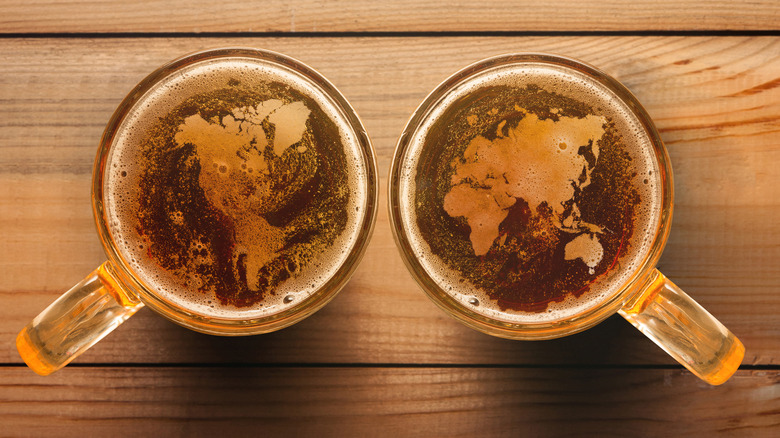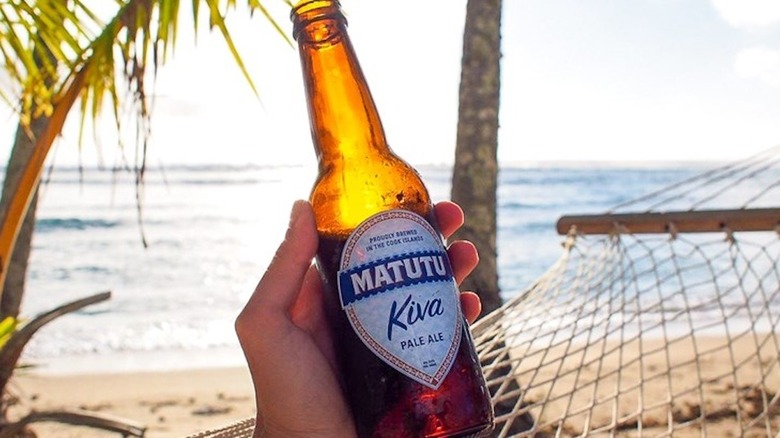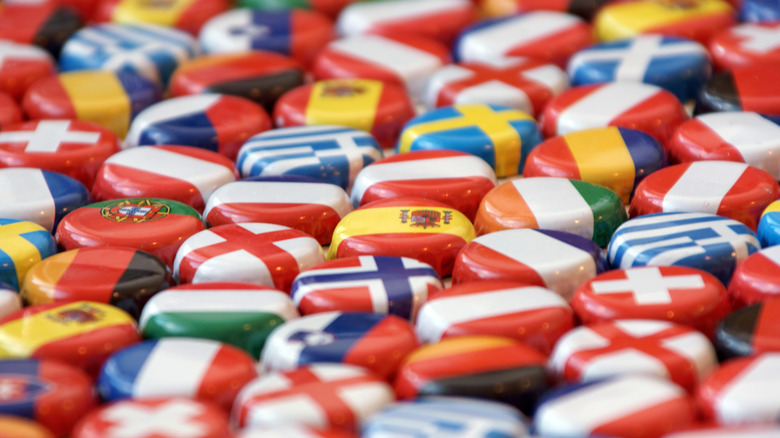The Surprising Country That Consumes The Most Alcohol
When you think of countries with a robust drinking culture, images of Russia's icy vodka, Germany's beer halls, and the whiskey (or is it whisky?) traditions of Ireland and Scotland might come to mind. Perhaps you picture locals drinking bottles of old-world wine at a French or Italian cafe. Or maybe you picture yourself on vacation, sipping tequila at a Mexican beach resort or slinging back cocktails while perched at a Las Vegas slot machine. Although these destinations are often associated with drinking and have high absolute numbers when it comes to alcohol intake, none of them are the biggest drinkers per capita, not by a long shot. The number one ranked country in this category is The Cook Islands, a small nation located in the South Pacific.
This statistic holds a different level of significance when you consider that tourists have been factored out of the equation. Vacationers have a separate measure entirely to gauge their alcohol intake and how it contributes to the intake of the country they're visiting. And just to sate your curiosity, data put out by the World Health Organization suggests that tourists drink the most when in Switzerland, Germany, Belgium, The Netherlands, and The U.K.
Drinking culture in the Cook Islands
The Cook Islands, with a population of about 18,000, includes 15 islands, each with its unique cultural identity. Although it is a self-governing nation today, it was a British Protectorate in 1888 before it was annexed to New Zealand, with which it remains closely associated. These historical details offer a window into understanding why alcohol intake in the Cook Islands is as high as it is.
Long before the trendy kava bars of today, this ceremonial beverage was widely consumed by men of the Cook Islands. When Christian missionaries arrived in the 1800s, they encouraged a shift away from traditional rituals like kava, which led to changes in social habits and paved the way for alcohol consumption as an alternative means of communal bonding. Because liquor laws were extremely strict up until 1960 — islanders were neither permitted to produce liquor nor import it — many began to secretly make "bush beer" from fermented fruit (usually oranges). As was common in many areas of prohibition, Cook Islanders found secluded places deep in the jungle to enjoy and later sell bush beer, not in speakeasies, but in what locals refer to as tumunus, a nod to the term also used to identify the fermentation barrels carved from coconut trees.
Although bush beer isn't widely consumed at social gatherings today, a culture of communal drinking remains. According to WHO data, the average Cook Islander over 15 years old averages 12.97 liters of pure alcohol annually. This equates to the amount of alcohol in about 762 bottles of beer, per person per year.
How drinking habits around the world compare
Global alcohol consumption patterns vary widely, influenced by cultural, economic, and social factors. Around the world, about 2.3 billion people drink, with 54% of men and 32% of women over the age of 15 reporting they've had a drink in the last year. For those who drink, the average alcohol consumption per day is about 32.8 grams (3 beers), which would amount to 1,095 drinks per year. Men also tend to be more likely to binge drink, with 50% reporting this behavior and only 20% of women doing the same.
While the Cook Islands top the charts in per capita consumption, other countries also have high levels of alcohol intake. Referring back to the WHO data, the top 5 drinking countries per capita are Latvia with 12.9 liters, followed by the Czech Republic at 12.73, then Lithuania at 11.93, and Austria at 11.9. If you're wondering where the U.S. is, it's way down the list at No. 35 behind France, Ireland, and Germany.
The story of alcohol consumption worldwide is not straightforward. Per capita figures only scratch the surface, eliding the nuances of binge drinking, gender, and age differences in drinking habits. These factors paint a richer, more complex picture of global alcohol consumption, underscoring the importance of understanding the cultural, economic, and social intricacies that influence how and why people imbibe and at what levels.


